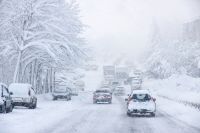Winter
driving tips: Prepare your car for cold weather
Taking a few simple precautions should keep you
safe regardless of the conditions you come across.
Most importantly, leave extra time to give
yourself a chance to defrost the windows and tackle slippery roads without then
having to rush to your destination.
Tyres
Ensure these have plenty of tread left and are in good overall condition with
no cracks or bulges. Make sure the tyres are pumped up to the pressure
recommended in the manual and check pressures weekly. If a tyre pressure
monitoring system is fitted, reset this once you’ve topped up.
Washer fluid
Keep this topped up with a mix of water and screenwash, to ensure that you can
see clearly through the windscreen however mucky the conditions. The bottle
should state the correct ratio to use.
Windscreen wipers
Check these are in good condition and that they effectively clear the glass.
Lights
Make sure that all lights work and are free from road grime – including
foglamps and reversing lights.
Numberplate
It is illegal to have numberplates that are too dirty to be read. Make sure
to keep your plates clean, even if you don’t bother to wash the rest of the car.
Breakdown cover
Ensure that you have cover – and the contact details are close to hand –
to avoid being marooned in the middle of nowhere.
Winter tyres
These don’t just offer much improved grip on snow and ice compared with
standard tyres, but they perform better on cold tarmac too. As a result, winter tyres can be much
more effective than four-wheel drive systems for driving on wintry roads.
Winter driving safety: Best survival equipment
It’s sensible to keep several items in the car
over winter that could prove invaluable in the event of an emergency.
Ice scraper or de-icer
Being able to see the road around you clearly is crucial. Make sure you can see
out of all of your windows before setting off.
Blanket and warm clothing
In the event you get stuck in winter, keeping warm is very important, so you’ll
want to leave a blanket and winter clothing such as a hat, gloves and a cosy
jacket in the boot just in case.
Water and food
Fog, snow and floods can lead to hours of traffic jams in winter. Having
high-energy food – such as chocolate or energy bars – and water close to hand
could prove invaluable if you get stuck. You can also top up washer fluid with
the water if you run out – though you’ll need to remember to add antifreeze
later to avoid this freezing if temperatures fall.
Fluorescent jacket and torch
Should the worst happen and you break down, these will keep you as visible as
possible.
First aid kit
This helps you to deal with any minor injuries there and then.
Shovel and snow socks
A folding shovel could come in handy if you encounter deep snow or mud. Snow
socks, which you wrap around the driven tyres could also be very useful,
gripping much better than summer tyres on packed snow. Make sure to take them
off as soon as you go back onto clear tarmac, however, as using these on
gritted roads will destroy them in minutes. You can also use snow
chains in deeper snow and ice.
Winter driving advice: How to
drive safely
Adapting your driving to the conditions is
vitally important during winter. Take heed of the following tips and you should
avoid incident:
Slow down and leave room
Cars need much longer to stop on snow, ice and even wet roads, so drive more
slowly and leave extra space when following other vehicles.
Beware of black ice
This is a real possibility as temperatures near zero, so drop your speed and
drive smoothly in these conditions, trying to avoid any sudden steering,
braking or acceleration inputs. Try to brake in a straight line and in a
progressive manner to avoid unsettling the car and skidding. If you do lock the
brakes, release the brake pedal to regain control.
Start in second gear
When driving on snow think about pulling off in second gear to limit wheelspin.
Take sunglasses
The low winter sun can easily dazzle drivers, so it’s wise to keep a pair of
shades in the car.
Lights on
Use dipped headlights in foggy, rainy and snowy conditions and whenever
light levels drop.
Override automatic headlights
Many cars switch the lights on when it gets dark, but they can’t always tell
when it’s raining, snowy or foggy, so you need to take control here.
Use foglights wisely
Foglights should only be used when visibility drops to less than 100m. Make
sure you know how to switch these on and off and use them in dense fog but
switch them off when it thins as they can dazzle other drivers.
Plan your route
If you have to drive in wintry weather consider the most suitable route,
bearing in mind that sticking to larger roads could prove safer, as these are
more likely to be well gritted.
Negotiate hills carefully
Avoid stopping on a hill in snow, if possible, as you may struggle to pull
off again. When descending hills, use a low gear and try to avoid using the
brakes if you can to avoid skidding.










